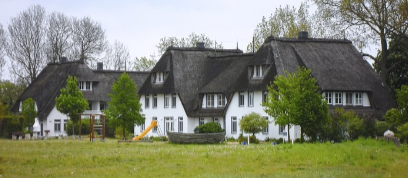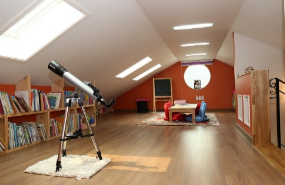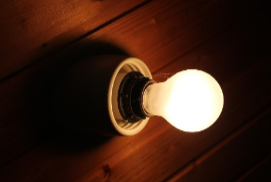Millennials Choose to Rent Instead of Buy: What’s the Environmental Impact?
by Kate Harveston
 To buy or not to buy? When it comes to deciding where to live, many millennials have chosen to eschew homeownership in favor of renting. And this can make sense for many reasons, from greater financial freedom to a need for flexibility on where to live.
To buy or not to buy? When it comes to deciding where to live, many millennials have chosen to eschew homeownership in favor of renting. And this can make sense for many reasons, from greater financial freedom to a need for flexibility on where to live.
But did you know renting can also be the friendlier choice where the environment is concerned? Read on to learn about how renters may be changing our environment for the better.
Size Matters
One way in which renting typically differs from homeownership is in the overall square footage of the residence. While it is true there are large homes available for rent in many areas, rental units usually take up less room per square foot. That is particularly true in urban areas, where high-rise construction allows builders to create multiple private residences using a comparatively small area of land.
And size matters a lot when it comes to reducing your overall carbon footprint. The smaller your living area, the less electricity and water you use.
In Phoenix, for example, where summer temperatures soar into the high triple-digit areas every day, many homeowners lament the way the need for A/C drives their electric bills through the roof. Cooling a larger home of 2,000 square feet easily costs at least $500 per month or more, even with the thermostat set at a sedate 78. Cooling a 1,200-square-foot apartment down to a more comfortable 74 degrees only costs $300 to $400 per month.
While obviously, renting a smaller place saves money, it also means you use fewer kilowatt-hours of electricity. That translates to needing less energy — which usually comes from ocean oil rigs or fracking. And since owning a home usually entails having at least a small yard to maintain, most renters don’t have to perform any outdoor lawn maintenance. That saves on precious water that is scarce in some areas, and also eliminates pollution from lawnmowers and leaf blowers.
 But can’t private homeowners invest in cleaner energies such as solar, while renters are stuck with what they’ve got? That used to be true — however, the marvels of modern technology have now made portable solar panels available. While originally designed for use by RV owners and the off-the-grid crowd, portable solar panels now come in all shapes and sizes, and require virtually no installation. And when a renter moves, they can take the panels along to their new digs. Switching to solar isn’t just for homeowners anymore!
But can’t private homeowners invest in cleaner energies such as solar, while renters are stuck with what they’ve got? That used to be true — however, the marvels of modern technology have now made portable solar panels available. While originally designed for use by RV owners and the off-the-grid crowd, portable solar panels now come in all shapes and sizes, and require virtually no installation. And when a renter moves, they can take the panels along to their new digs. Switching to solar isn’t just for homeowners anymore!
Green Building Initiatives
In addition to using up less space, renters have an additional advantage over many homeowners when it comes to keeping a green residence. As many cities initiate “green building” requirements for new construction, renters can choose to live in a building that is designed to be more environmentally friendly.
Many cities such as San Francisco already have green building initiatives in place. But even in areas which lack such programs, renters often have an advantage over homeowners when it comes to energy-saving appliances. Meanwhile, a homeowner may have to drop $2,000 or more to upgrade their older appliances to newer Energy Star-certified appliances.
And energy-saving measures do more than just keep the planet green. They can save renters some serious greenbacks as well. Those living in green buildings, for example, save approximately 30 percent on their electric bills every month. That can easily equate to hundreds of dollars a year in monetary savings. Plus, you’re keeping the planet greener for the next generation.
Suggestions for Keeping a Green Pad
 Whether you’re a renter or a homeowner, if you want to go even further, here are some additional suggestions to make your pad as environmentally friendly as possible:
Whether you’re a renter or a homeowner, if you want to go even further, here are some additional suggestions to make your pad as environmentally friendly as possible:
- Try a window or rooftop garden. Not only will you put your green thumb to work, but each vegetable you grow is also one less that the grower needs to ship long distances to the grocery store.
- Prevent leaks of hot and cold outside air by installing low-cost weather-stripping around all doors and windows to keep out drafts.
- Replace your old light bulbs with LED or CFE bulbs that use much less energy.
- Consider replacing your showerhead with a low-flow showerhead to cut down on water use.
- Invest in an inexpensive clothes-drying rack. There’s no need to always run the dryer. And, when the weather is nice, you can place the rack on your patio or balcony to give your clothes that fresh-air scent.
If you are a renter, there’s no need to lament your lack of homeownership. Instead, celebrate that you are doing your part to keep the planet green — whether you intended to or not!
 Kate Harveston
Kate Harveston
Political Writer and Blogger
onlyslightlybiased.com
Kate writes about politics, culture and the environment. She holds a Bachelors in English and is pursuing a career as a journalist.
Images courtesy of Pixabay.com.



